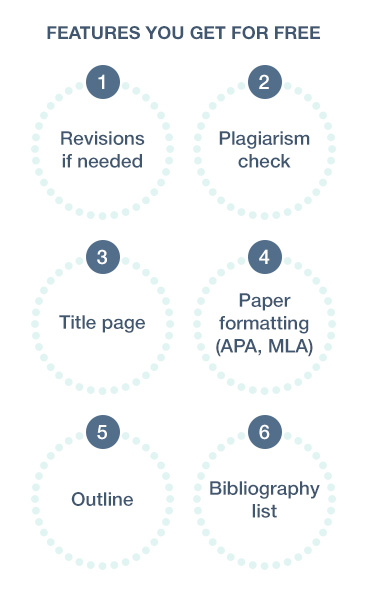Experience of Own Dickinson’s Life
The works of Emily Dickinson – an American female poet – belong to the most valuable poetic heritage in the history of both American and world literature. Together with the works of Whitman, Dickinson’s poetry defines the main contribution of America into the world literature of the end of the XIXth century. What makes her poems so special is the organization of her thoughts about the world around her into a forceful language containing metaphors, rich imagery and symbolism, which is formally represented by the means of dashes, extraordinary rhymes and distinctive iambic meter.
Get a Free Price Quote
Just as any other poet, Dickinson explored the world outside her through her own experience and put it on paper. Thus, she struggles to understand nature and God, love and indifference, immortality and death, and uses images from various spheres (medicine, fashion, religion, domestic life, etc.) to discuss her insights. It is obvious from her poetry that Dickinson is fond of nature, and its elements are present in the vast majority of her works. Like transcendentalists, Dickinson stresses the importance of the unity “nature – human being”. She often speaks of the connection between nature and God. For instance, in Heaven is What I Cannot Reach she speaks of paradise which is far away from her: “Behind the hill, the house behind, ‒ / There Paradise is found!” (Dickinson). Here, heaven is the place where God resides, and she is attracted to it. Dickinson wants to be closer to God, but he is so far away that all she can do is watch the sky. So, one can say that she was a religious poet, but unlike others, she refused to be a God’s instrument. Dickinson seems very persistent and resolute in her desires. As can be seen from Mine ‒ by the Right of the White Election, she strong-willingly states that the world belongs to her: “Mine – here – in Vision – and in Veto!”(Dickinson). Of course, heaven is not the only character the poetess describes. She also speaks of the wind, insects, birds, people and so on. For example, in Two Butterflies Went Out at Noon, she speaks of colorful butterflies “upon a shining sea” (Dickinson). These creatures disappear, but the narrator is unaware of their destination. So, nature is a central character in many of Dickinson’s poems, and the poetess skillfully uses it to describe her beliefs and wishes.
Personal Opinion about God
Another theme of Dickinson’s poetry is the assertion of her own personality. It is related to her opinion about God. The act of writing for her is already self-assertion, for in such a way she can communicate her thoughts and intentions to others. Dickinson self-supremacy becomes especially obvious when she opposes someone or something else. For example, in They Shut Me up in Prose, the speaker challenges her oppressor who might be controlling her body, but never her mind – it remains free and sharp: “…Could themself have peeped – / And seen my Brain – go round” (Dickinson). Since God is omnipresent in Dickinson’s works, he often is the one to impose his will on others. However, the poetess proves that the ability to keep one’s personality free despite all the troubles is the key factor separating the speaker from others.
Dickinson’s form and style are quite peculiar and the reader can distinguish her poems from those of other authors at the first reading. The basic thing that is characteristic of the poetess is the extensive use of dashes and exclamatory marks. For instance, in the Mine by the Right of the White Election, which has already been mentioned, Dickinson places a dash, or even several dashes, in each line except one: “Mine ‒ here ‒ in Vision ‒ and in Veto!” (Dickinson). This, together with the iambic meter, makes the poem sound like a march, and it feels that the speaker is very determined. Dashes also accelerate the events and make them more tensed. The effect is reinforced by the use of exclamation marks. Dickinson might also use dashes to make pauses while reading the poems aloud, or to create bridges between different parts of a poem where they otherwise would not be noticeable. Apart from that, Dickinson capitalizes much more nouns than required by grammar. As one can see from this poem, she writes the words “veto”, “vision”, etc. in capital letters, thus placing particular importance on them. Dickinson does the same with her characters when writing about nature. In such a way, she shows that they are not simply animals or natural phenomena, but are valuable heroes of her lyrics.
8 Reasons to choose us:
- 01. Only original papers
- 02. Any difficulty level
- 03. 300 words per page
- 04. BA, MA, and Ph.D writers
- 05. Generous discounts
- 06. On-time delivery
- 07. Direct communication with an assigned writer
- 08. VIP services
The Speakers in Poems
The narrator in Dickinson’s poems often uses first person singular, but this does not necessarily means that this is the poetess herself speaking, for the speaker might, as well, be a product of her imagination. Speakers are created to present the poet’s poem, and these speakers might be based on real people, but in most cases, they share many characteristic with the poet himself. The speakers in Dickinson’s poems are various, but they all share similar character traits and all poems have a similar tone. Dickinson’s usage of “I” and also “we” shows that the experience she shares is personal, she discusses subjective thoughts rather than objective truth. In addition, personal pronouns make the distance between the speaker and the reader shorter ‒ it seems that they are actually having a dialogue. Sharing her personal experience and thoughts, Dickinson challenges those who wanted to limit personal development and individual knowledge. Interestingly, Dickinson left most of her poems unnamed (only ten of them have actual titles), and they are referred to by their first lines or numbers assigned to them. As to the rhyme and meter, Dickinson does not follow a clear pattern: sometimes there are too many syllables in a line (like in I’ll tell you how the sun rose), and her rhyme is approximate. In this poem, for example, the reader would expect “time” to rhyme with “ran”. It is worth mentioning that approximate rhyme is very common nowadays, but in the time of the poetess, it was something new and surprising. This indicates the rebellious spirit of the poetess who was not afraid to experiment.
Imagery and Symbolism
It goes without saying that imagery and symbolism is a key factor which helps make a poetic piece both beautiful and profound, even if at first glance it seems simple and easy to understand. Dickinson’s admiration of nature makes her poems rich in symbols, since every image can be interpreted in many ways: one can contemplate the hidden meaning of heaven, wind, stones, light, seeing and other images in Dickinson’s works. One of the powerful metaphors employed by the poetess is the one of a bird. In her Hope is the Thing with Feathers it personifies hope itself. In fact, the whole poem is a big symbol where the first line is only the beginning of a “chain” of metaphors: “the tune without the words”, “the Storm”, “the strangest sea”, “Extremity”, etc. (Dickinson). Formally, the poem possesses the features characteristic of Dickinson’s poetry, like iambic trimester and breaking pauses. Although the poem belongs to the early period of Dickinson’s poetry, it already demonstrates her mature poetic style. In the poem, Dickinson says that hope it never dies and does not ask “a crumb” of a person. When she says that the storm can “abash” a little bird, she brings the reader to the reality which sometimes might be harsh; nonetheless, she continues hoping. Analyzing Dickinson’s imagery, one can see that she found her own way of expressing the things which cannot be expressed. Using these bright symbols, she lets the reader inside her soul and shows what she feels.
To sum up, Dickinson’s poetry is peculiar not only in its form, but also in its content. She uses approximate rhyme, dashes and exclamation marks to demonstrate her determination and make her poem sound more dramatic. Dickinson writes about the relation between a human being, nature and God, and tries to explore the deepest corners of her own soul. She uses colorful metaphors and creates bright images, so that the reader can understand her mood and thoughts.




 TOP 10 Writers
TOP 10 Writers


